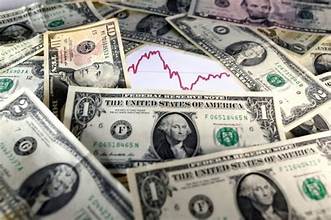
In the intricate web of global economics, few entities hold as much sway as the United States dollar (US Dollar). Its movements, subtle or pronounced, send ripples across the vast expanse of international trade, finance, and investment. Understanding the nuances of its trajectory is paramount for any business or financial entity navigating these tumultuous waters. In this comprehensive analysis, we delve into the current state of the US Dollar, deciphering its recent drifts and implications for the broader economic landscape.
The Macroscopic View: US Dollar Drifts Lower
The past several months have witnessed a discernible trend: the US Dollar drifting lower against a basket of major currencies. This descent, while gradual, is not without significance. Market observers attribute this phenomenon to a confluence of factors, ranging from macroeconomic indicators to geopolitical developments.
Economic Indicators and Monetary Policy
Central to the narrative of the US Dollar’s decline are economic indicators, which offer insight into the health of the American economy. Metrics such as GDP growth, employment figures, and inflation rates provide a snapshot of economic vitality. Recent reports have painted a mixed picture, with growth showing signs of resilience but inflationary pressures mounting. The Federal Reserve’s (Fed) response to these developments is crucial. Amidst mounting inflationary concerns, the Fed faces the delicate task of balancing price stability with economic growth. Any divergence from market expectations regarding monetary policy can trigger fluctuations in the US Dollar’s value.
Geopolitical Dynamics
Geopolitical tensions exert a profound influence on currency markets, shaping investor sentiment and risk appetite. The US Dollar, as a global reserve currency, often serves as a haven during times of uncertainty. However, recent geopolitical developments have introduced an element of volatility. From trade disputes to diplomatic tensions, the geopolitical landscape is fraught with complexities that reverberate through currency markets. The interplay between these geopolitical forces and the US Dollar’s trajectory underscores the interconnectedness of global finance.
Implications for Businesses and Investors
The US Dollar’s drift lower carries far-reaching implications for businesses and investors worldwide. As the backbone of international trade, fluctuations in its value can impact the cost of goods, competitiveness, and profitability.
Exporters and Importers
For exporters, a weaker US Dollar can prove beneficial, as it makes their goods more competitive in foreign markets. Conversely, importers may face increased costs, potentially squeezing profit margins. Navigating currency fluctuations requires adept risk management strategies, such as hedging and currency diversification, to mitigate exposure to exchange rate volatility.
Multinational Corporations
Multinational corporations with operations spanning multiple countries are particularly sensitive to currency movements. Fluctuations in the US Dollar can affect the translation of foreign earnings into domestic currency, influencing financial performance and shareholder value. Strategic hedging and operational efficiency are paramount for mitigating currency risk and preserving profitability.
Investors and Financial Markets
Investors, whether individuals or institutions, must navigate the ebbs and flows of currency markets to optimize portfolio performance. A weaker US Dollar may bolster returns on foreign investments denominated in other currencies. However, it also introduces currency risk, which must be carefully managed through diversification and hedging strategies. Financial markets, ever attuned to macroeconomic trends, react swiftly to shifts in the US Dollar’s trajectory, amplifying volatility and creating opportunities for astute investors.
Looking Ahead: Navigating Uncertainty
As businesses and investors adapt to the evolving landscape shaped by the US Dollar’s drift lower, one constant remains: uncertainty. The interplay of economic indicators, monetary policy, and geopolitical dynamics ensures a complex and dynamic environment. Navigating this uncertainty demands vigilance, foresight, and a nuanced understanding of global markets.
In conclusion, the US Dollar’s descent against major currencies heralds a period of adjustment and opportunity for businesses and investors alike. By staying abreast of macroeconomic trends, implementing robust risk management strategies, and maintaining a flexible mindset, stakeholders can navigate these turbulent waters with confidence.




